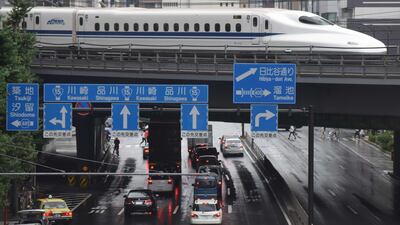India celebrated 70 years of independence from British rule this week, prompting a serious assessment of its economic performance from commentators and economists for whom the sub-continent is an endless source of fascination.
When the British finally lowered the flag in 1947, western economists didn’t think much of its prospects, believing it was probably ungovernable and would basically be unable to feed a population that has grown by three and a half times since independence. It would either lurch into communism or dictatorship, doomed to economic stagnation and locked into a poverty trap.
The result has been very different. After a slugging start, India powered past the British and French economies in the early 1990s, caught Germany a decade later and, measured at “purchasing power parity”, it has passed Japan to become the world’s third-biggest economy. In 1947 it was 15 per cent as big as the US economy; today it is half the size.
Since the 1990s India has averaged an annual 6.5 per cent growth rate, more than twice that of the western economies, and growth is now expected to rise to 7.6 per cent in 2017, ahead of China’s forecast 6.7 per cent. At that pace, the Indian economy will double again over the next 10 years while the US, at its underlying rate of about 2.5 per cent, will grow by a third. Sometime in the mid-2030s, India will move into second place after China.
Contrast that with Japan, which for nearly 40 years after the Second World War, was the great economic phenomenon of the world, a superpower whose cheap and popular cars almost killed the American and British auto industries (it finished off Chrysler as an independent and saw off British Leyland and severely dented Ford and GM) and dominated the electrical goods, chemicals and shipbuilding industries. For several decades it had the fastest growing stock market in the world and Tokyo had the most expensive properties. A statistic much quoted at one time was that the value of down-town Tokyo exceeded that of all the real estate in the state of California.
By 1990 it had passed the Soviet Union to become the second biggest economy in the world. Then it all stopped. The property bubble burst, economic growth ground to a halt and share prices, despite an impressive “bull run” since April this year, are still below their level of twenty years ago. In 2011 China passed it to take second place in the world economic league and India has since pushed it down another notch. Even Germany has been getting close.
_______________
Read more:
Japan GDP unexpectedly puts it atop G7
Dubai on cards for India's biggest gold jeweller
Reliance's 'free' 4G phone has Indian rivals rattled
_______________
It wasn’t supposed to happen this way. I well remember the economic debates of the 1970s and 1980s, when Japanese manufacturing industry was turning the UK's west Midlands and Clydeside into industrial deserts, and forecasts it would go on forever. Any doubts which suggested that Japan’s economic boom, like all booms before it, would falter, were met by the reply from those who claimed to know: “This time it’s different.”
Well, it hasn’t been. In the post-bubble years, Japan has created the phrase “secular stagnation”, a phrase used to describe an economy hopeless mired in zero growth, deflation and soaring debts. The painfully slow recovery from the financial crisis of 2008/9 caused economists to fear that the US, Britain and of course the euro zone, were getting bogged down in the same phenomenon.
In the past few days, however, estimates released from the cabinet office, show that Japan might have entered sunnier foothills. GDP grew at an annualised 4 per cent in the April to June quarter, well above the market’s 2.5 per cent expectations and the 1.5 per cent annualised figure for the quarter to March. The economy has now achieved its longest spell of uninterrupted growth in more than a decade – six consecutive quarters of rising GDP, a positive streak that Japan last experienced from early 2005 to mid-2006.
There is now much talk in economic circles about the significance of the revival for the prime minister Shinzo Abe and the “three arrows of Abenomics”. Five years ago, Mr Abe pledged to end two decades of deflation and low growth by introducing the biggest stimulus programme yet, a combination of expansionary fiscal measures and an enourmous $1.4 trillion programme of quantitative easing. Since then the yen has dropped sharply against the dollar and real wages have actually fallen – and the economy still seemed stuck in its miserably low growth rate. Families and businesses remained in what Harahuko Kuroda, the governor of the Bank of Japan, described mournfully as a “deflationary mindset”.
This week’s figures suggest that optimism may have returned. Wage rises have begun to accelerate, private consumption, which accounts for nearly two-thirds of GDP, rose by 0.9 per cent in the last quarter – its fastest for three years – and unemployment is down to 2.8 per cent. Economists are now talking about businesses turning much more positive and consumer spending, corporate investment and residential investment all likely to increase. No wonder we are seeing headlines such as “Land of the rising sun can dream of new dawn”.
Both the Indian and Japanese economies still face huge problems, but to have both of them powering ahead at the same time as the US and the euro zone are bouncing back has to good news for the rest of the world.

